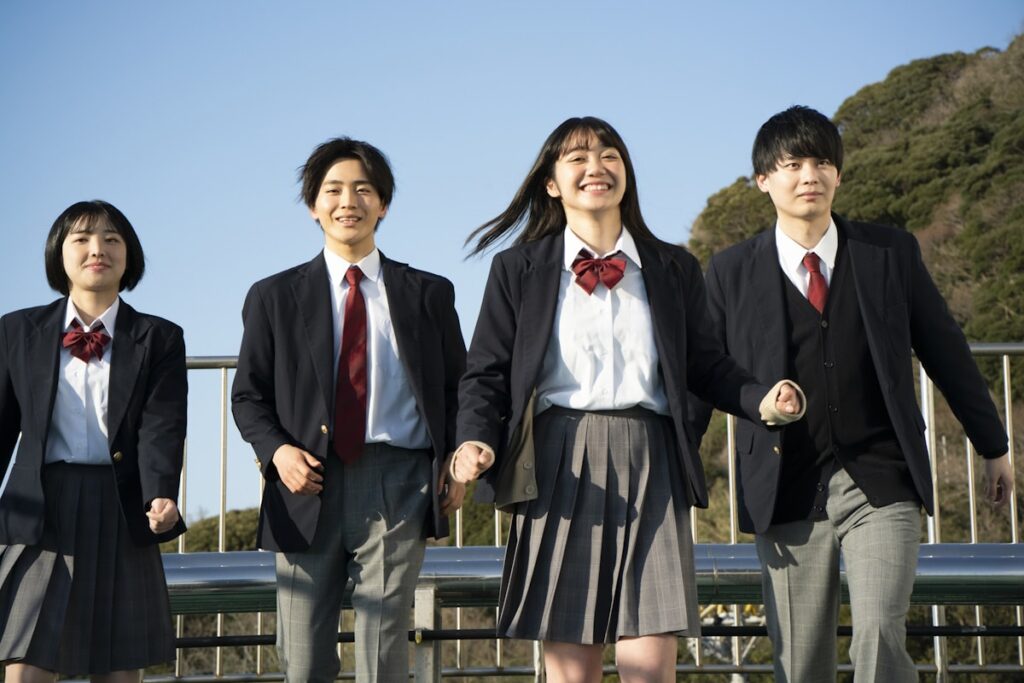[ad_1]
“Okay everyone, be quiet. I’m going to take attendance now, okay?”
A male schoolteacher begins to call on each student. Or rather, each cardboard cutout of students.
This is a broadcast news segment from Asahi TV that aired this week. The teacher is anchor Kogi Ippei (小木逸平). The camera’s panned out to the back of the makeshift classroom, and we see two rows of five desks.
All but one is occupied by crude paper children facing Mr. Kogi. Hiring child actors was perhaps beyond the major TV corporation’s budget.

Mr. Kogi calls on Kensuke, who is the missing student.
“Ah, that’s right. Kensuke is absent today because of learncation.”
Mr. Kogi breaks character and seamlessly switches into reporter mode.
Advertisements
This whole skit was Kogi’s segue into a news story about learncation (ラーケーション), a new word combining “learning” and “vacation” that represents Aichi Prefecture’s new system that allows public school students from elementary to high school three days of absence a year to spend quality time with their families.
53/54 districts want learncation
On September 4th, Aichi Prefecture announced that 53 out of 54 districts will adopt learncation by January next year. Ichinomiya City and Inuyama City have already introduced learncation as of September 1st.
Learncation aims to encourage families to spend more time together by allowing schoolchildren to take days off according to their parents’ schedules.
Students will not be marked as absent as long as they apply for learncation via email or phone call to their school.
The plan includes the making of a “learncation card,” which is not mandatory but involves the family discussing and planning how to spend learncation days.
Aichi Prefecture: Discovering how to rest

The initiative is part of Aichi Prefecture’s “Resting Revolution,” or yasumikata-kaikaku (休み方改革) in Japanese.
45% of citizens work on Saturdays, and 30% work on Sundays, according to Aichi Prefecture’s local government. This makes it difficult for families to spend time together, which prompted officials to introduce learncation.
The prefecture is leading the country in other work-life balance initiatives. That includes the Toyota Calendar that applies to Toyota employees, which comprises one-fourth of the entire population. In return for having workers put in weekend shifts, Toyota adjusts their holidays to extensive summer and New Year breaks.
Vacation or separation: What it could mean for the education gap
Nagoya City is the only city that has refused to participate in learncation, citing concerns that “a disparity will emerge between children who can and cannot take days off.”
Professor Matsumoto Ryōji at Ryukoku University’s Department of Sociology echoes Nagoya City’s worries and highlights the risk of learncation widening the gap between the privileged and poor.
“School trips are a great opportunity for children from any household to learn about culture. However, with learncation, it only encourages households that are financially stable enough to emphasize trips and outdoor activities.”
Learncation is conditional
Absence counts as learncation only if 1. students spend time with their legal guardians and 2. devote their time to educational activities.
As for what kind of activities would be considered educational under prefectural guidelines, these can be found in school leaflets and the prefecture’s website for recommended learncation activities. The prefecture makes suggestions under keywords such as “nature” and “science.”
For the “nature” category, the prefecture lists Aichi Prefecture Forest Park and Aichi Kodomo no Kuni, among other spots. “Science” spots include the Toyota Hands-On Museum and the Aichi Museum of Flight.
More days off

On September 4th, Aichi Prefecture announced another plan to let kids out of school. They are calling it “School Holiday for Prefectural Citizens’ Day,” or kenmin-no-hi-gakkō-holiday (県民の日学校ホリデー) in Japanese.
Marking 150 years since the prefectural government was born, November 27th will be Citizens’ Day in Aichi Prefecture this year. The week leading up to Citizens’ Day will be called “Aichi Week,” during which public schools can choose one day to give students a holiday. All 54 districts plan to adopt this new holiday.
Why Japan gets no rest
Professor Noda Susumu at Kyushu University, who specializes in labor laws, compares Japan to France regarding people’s tendency to take longer or shorter vacations. Professor Noda shares that people in Japan only use 50% of their paid vacation days, whereas the French take 100% advantage of their chance to take off work.
Part of why France is so flexible in its labor conditions and vacation leave is due to the 1936 law that granted laborers two weeks of paid vacation per year.
In contrast, Japan’s Labor Law states that “ten days of consecutive or divided paid vacation must be granted to a laborer that has worked more than 80% of their working days over a continued 6-month period starting from the day they were hired.”
Professor Noda says that the law, which requires 80% attendance for anyone wanting to obtain paid vacation days, makes it difficult for workers in Japan to rest sufficiently. In addition, people often save their paid vacation days in case they get sick.
What to read next
A 10-Day Vacation: Behind Japan’s Epic “Golden Week”
Sources
[1] 【“#学校休める新制度”始まる】. @hst_tvasahi
[2]「ラーケーション」、愛知の11市町で開始 名古屋市は導入見送り. 毎日新聞
[3] 「ラーケーションの日」導入市町村の9割で来月末までに開始. NHK
[4] 愛知で始まる「ラーケーション」に歓迎と懸念 名古屋市は導入見送り. 朝日新聞
[5] 新たな“休暇のカタチ”「ラーケーション」 年に3日まで休みが「欠席にならない」 有給休暇取得の促進で「休み方改革」進むか 専門家は「子供の能力形成に重要な機会」と指摘. Yahoo!ニュースJAPAN
[6] 愛知発の新しい学び方「ラーケーションの日」ポータルサイト. 愛知県
[7] 「県民の日」に合わせて学校が11月下旬の平日1日休みに 自治体別実施日一覧 愛知. Yahoo! ニュースJAPAN
[8] なぜ短い日本の夏休み 休めないのは「恥」のバカンス大国との違いは. 朝日新聞
[ad_2]
Source link



